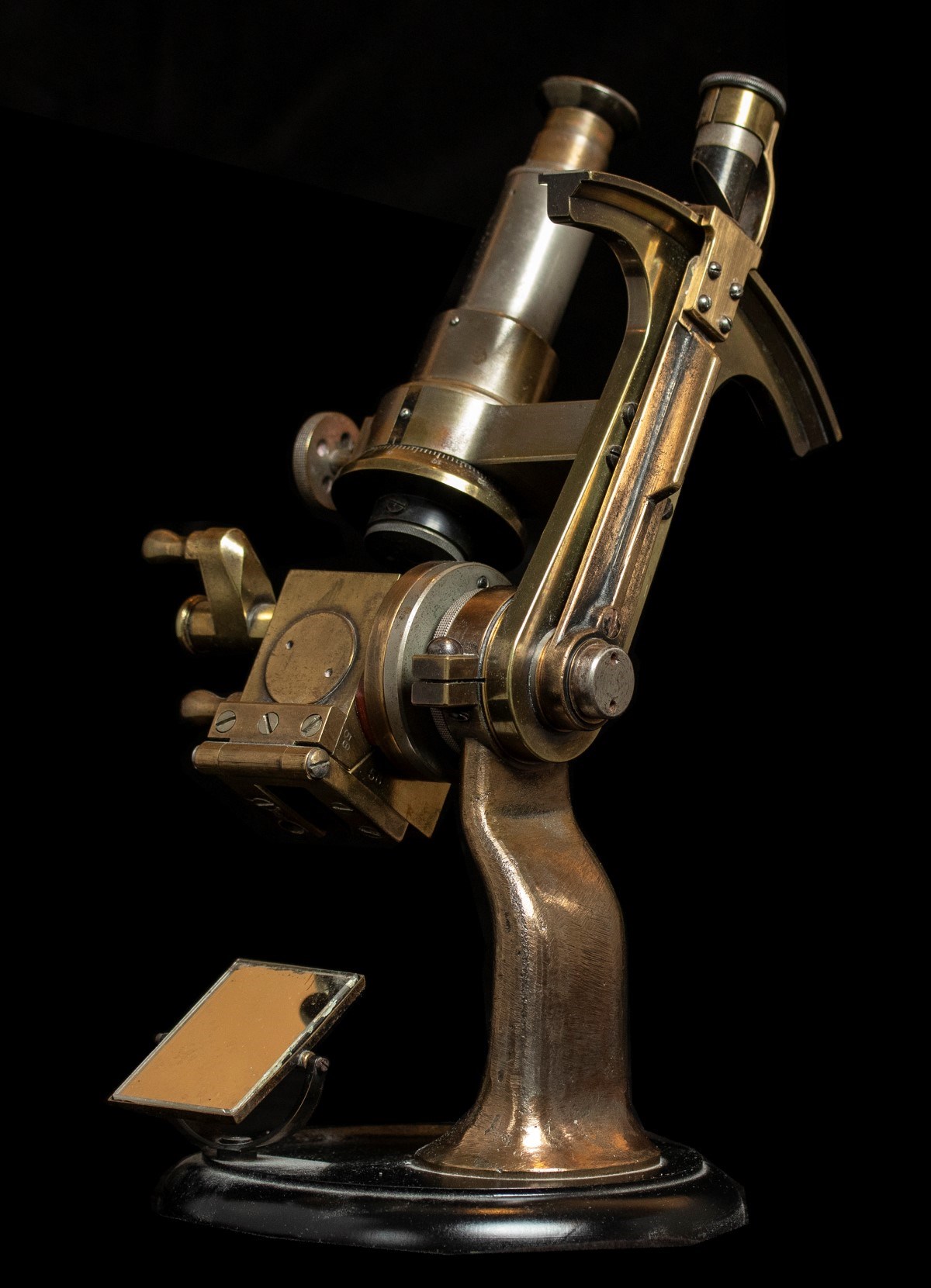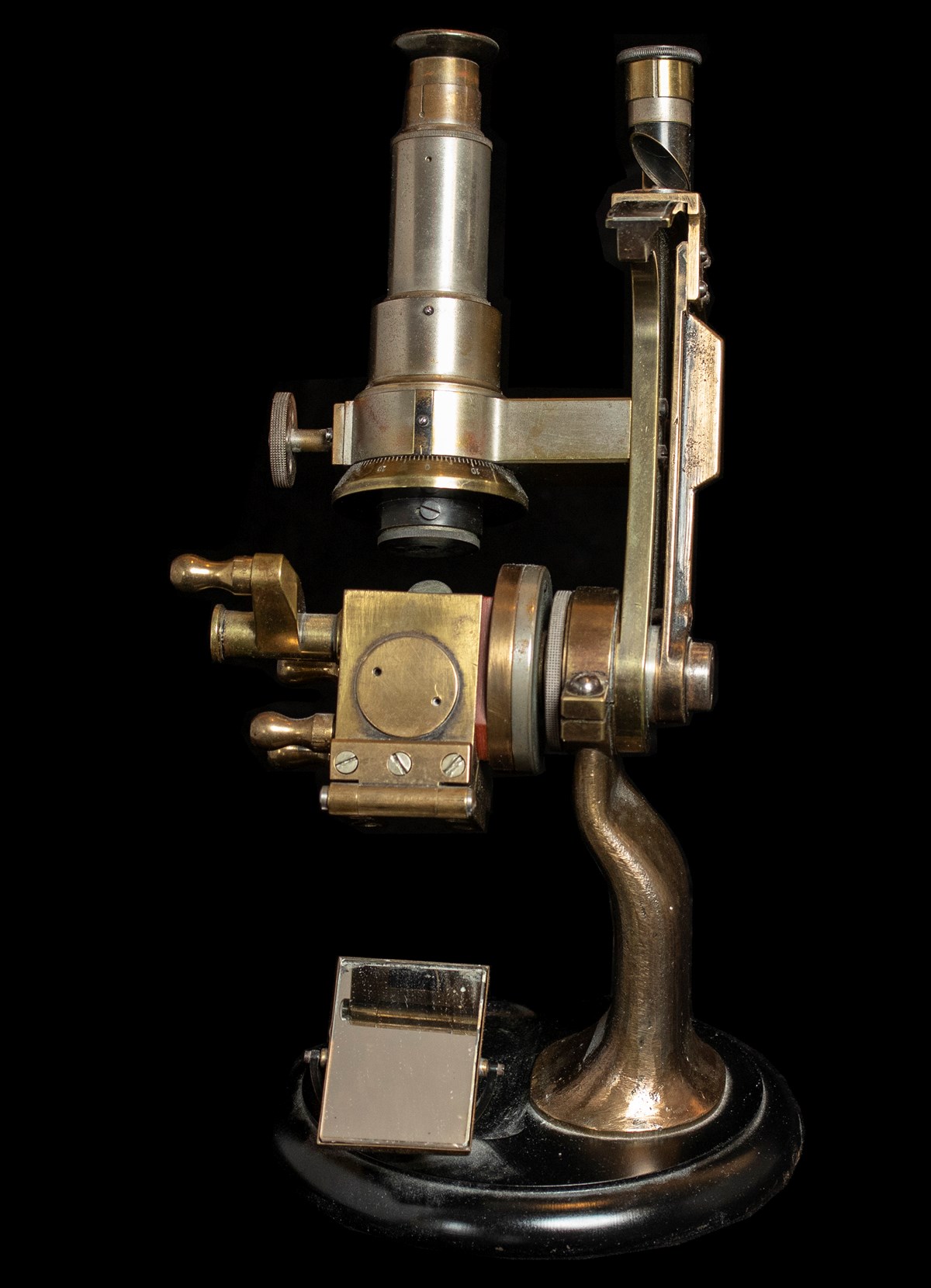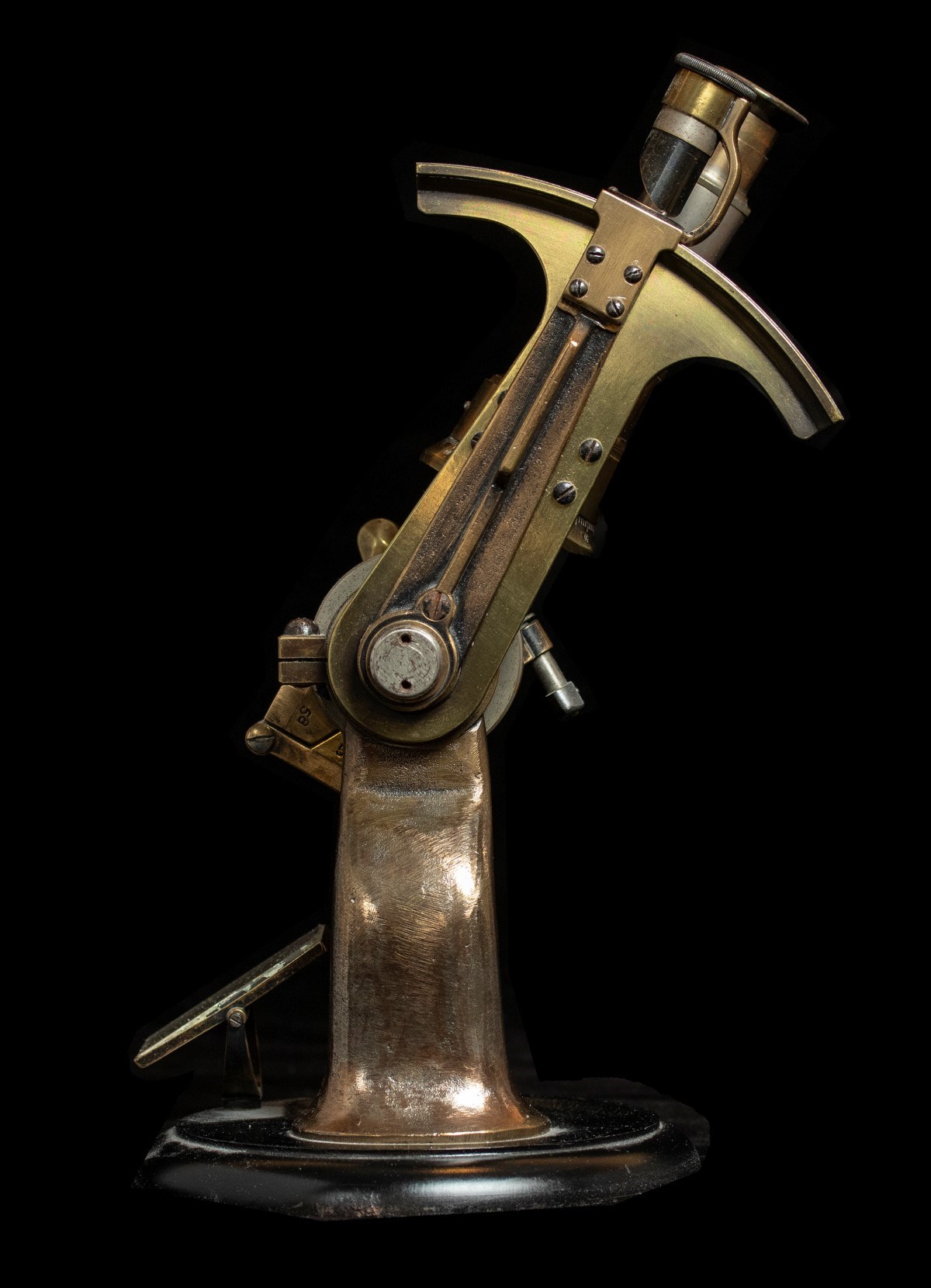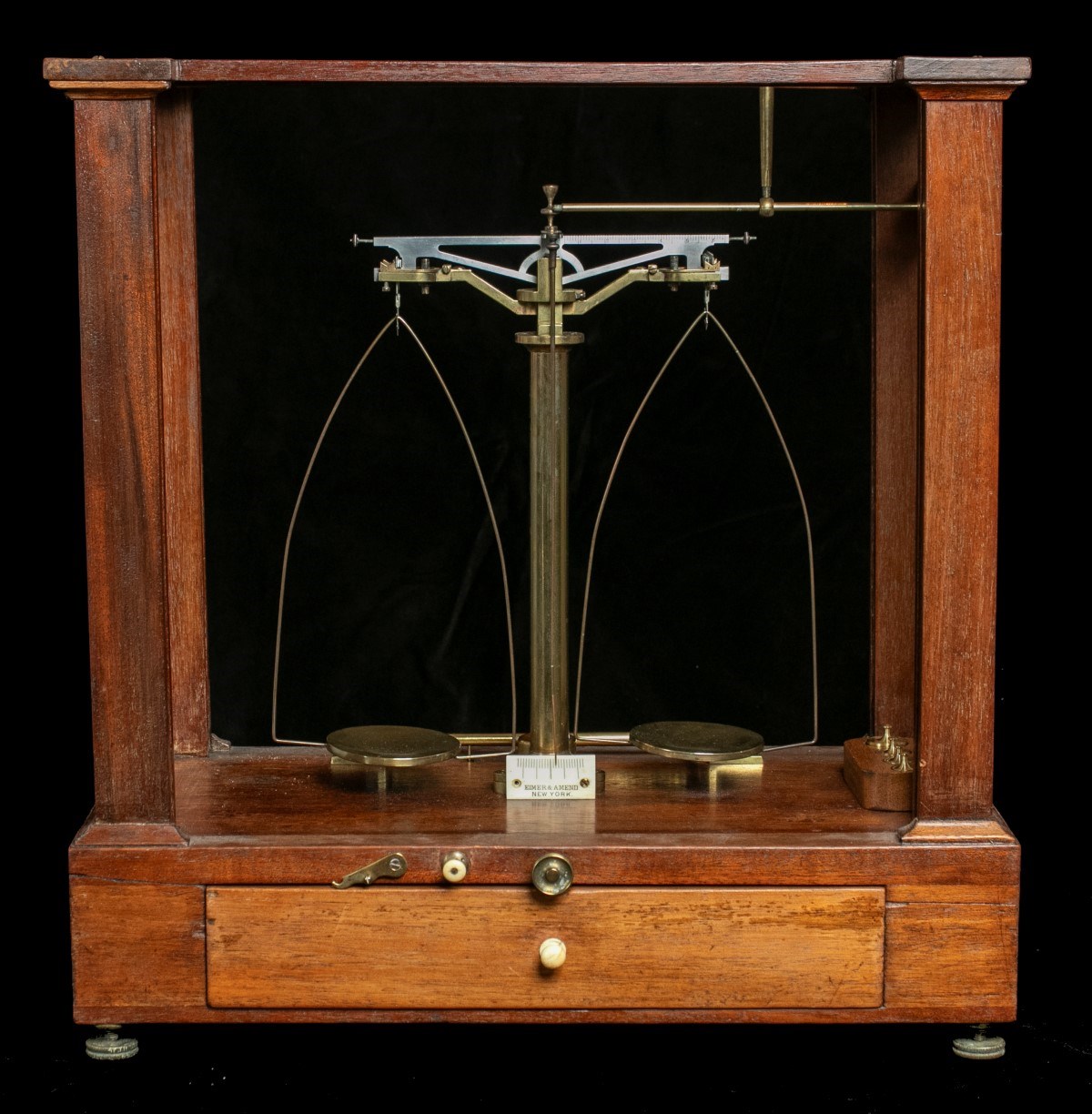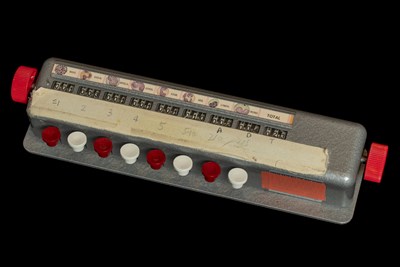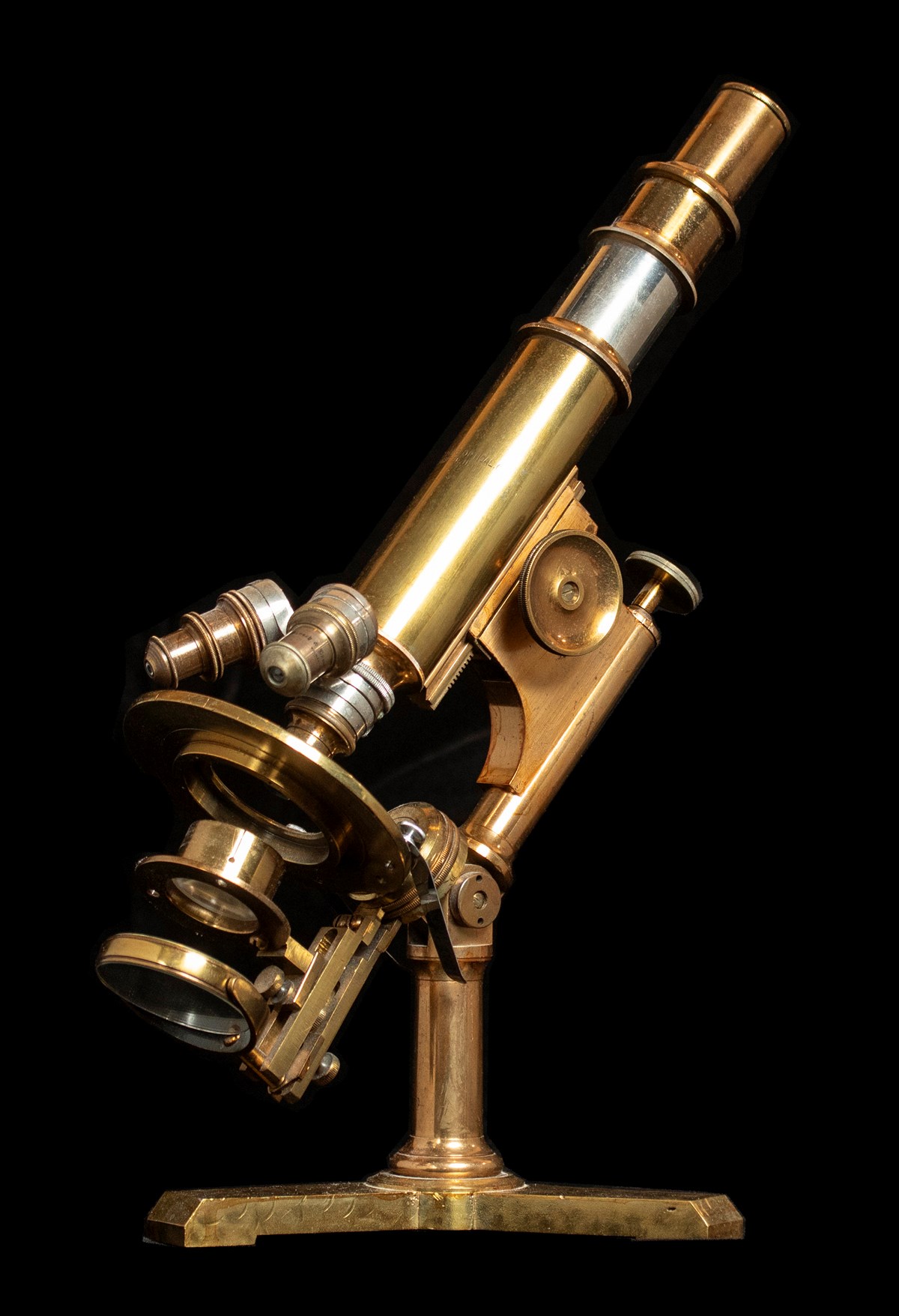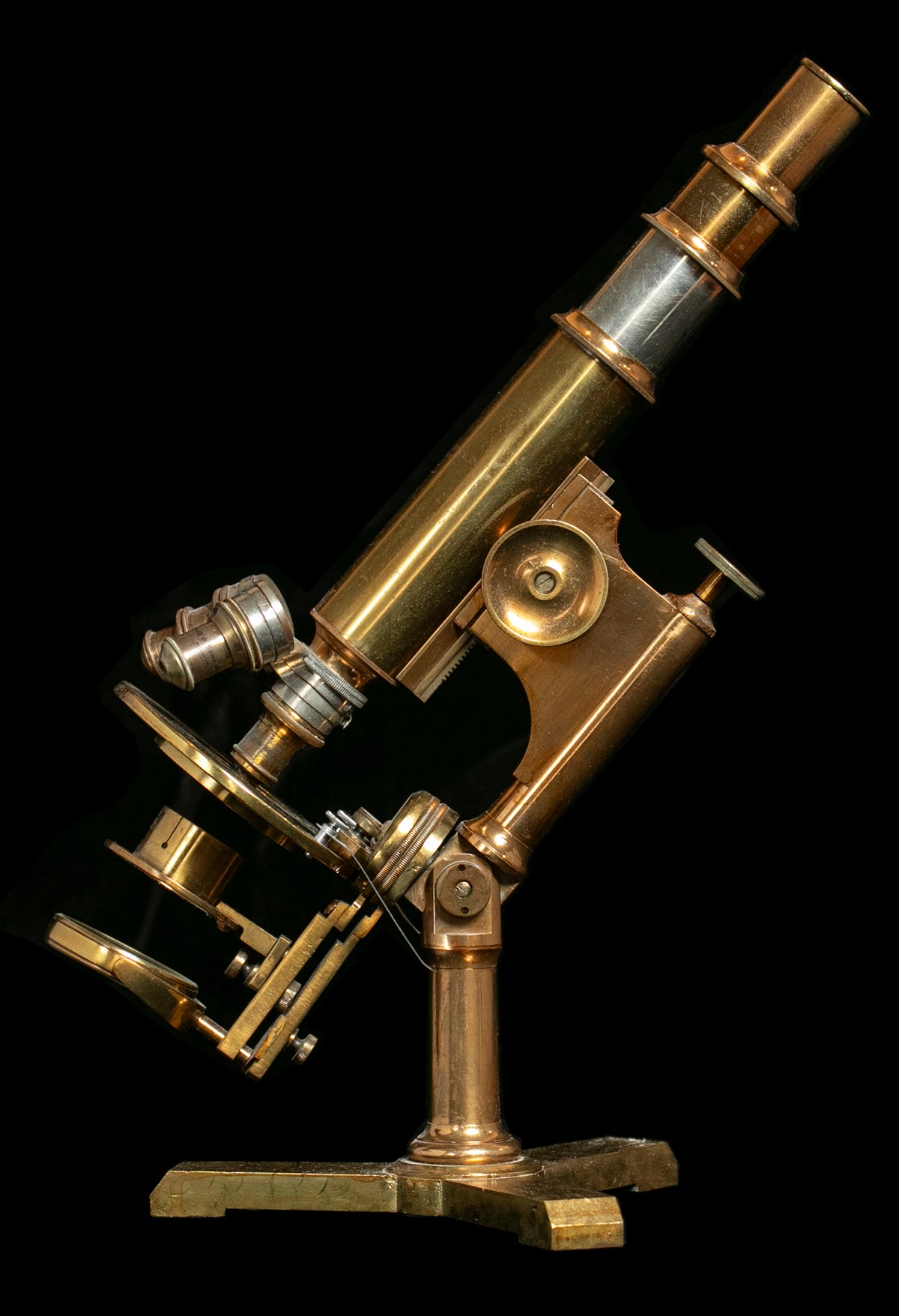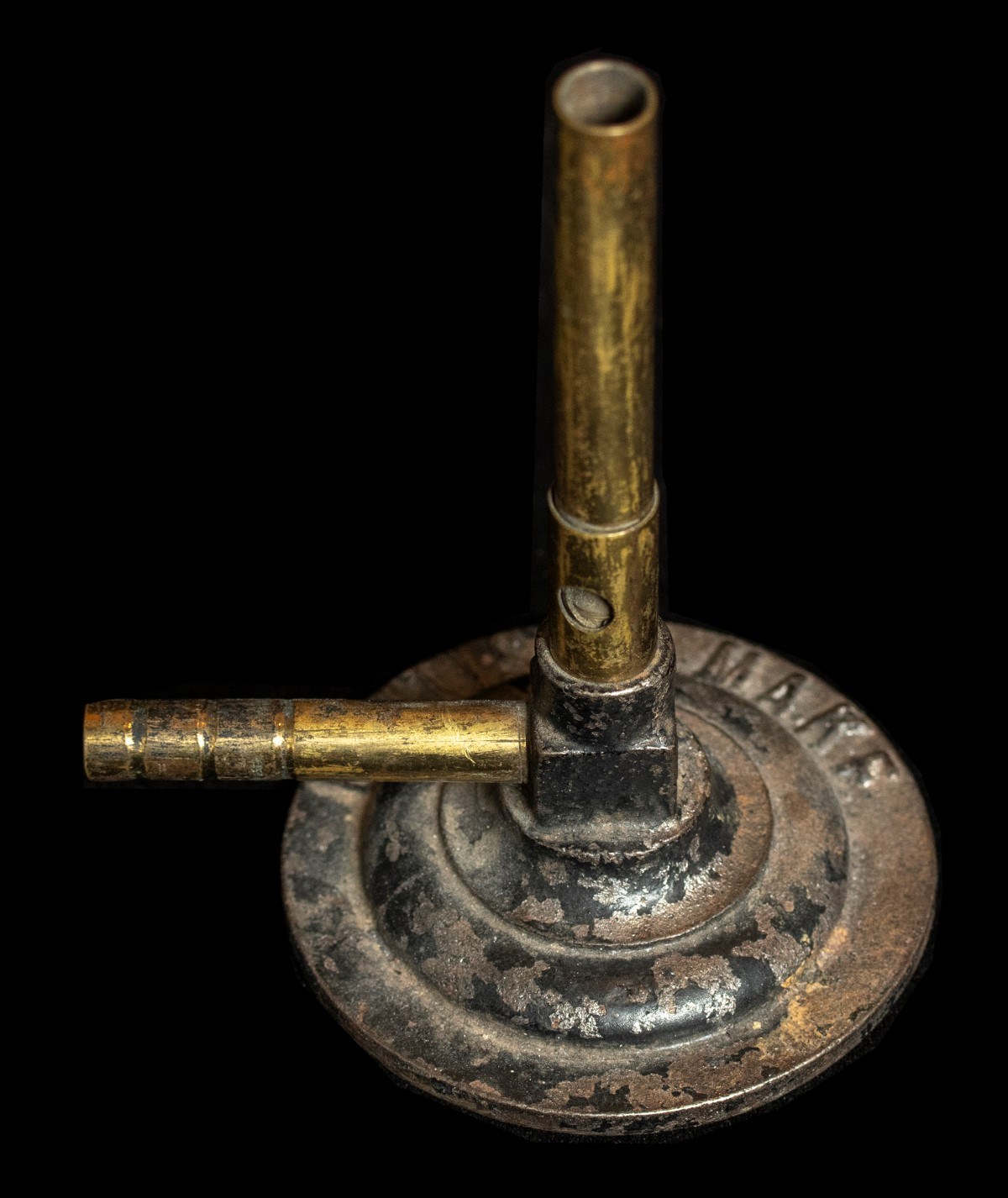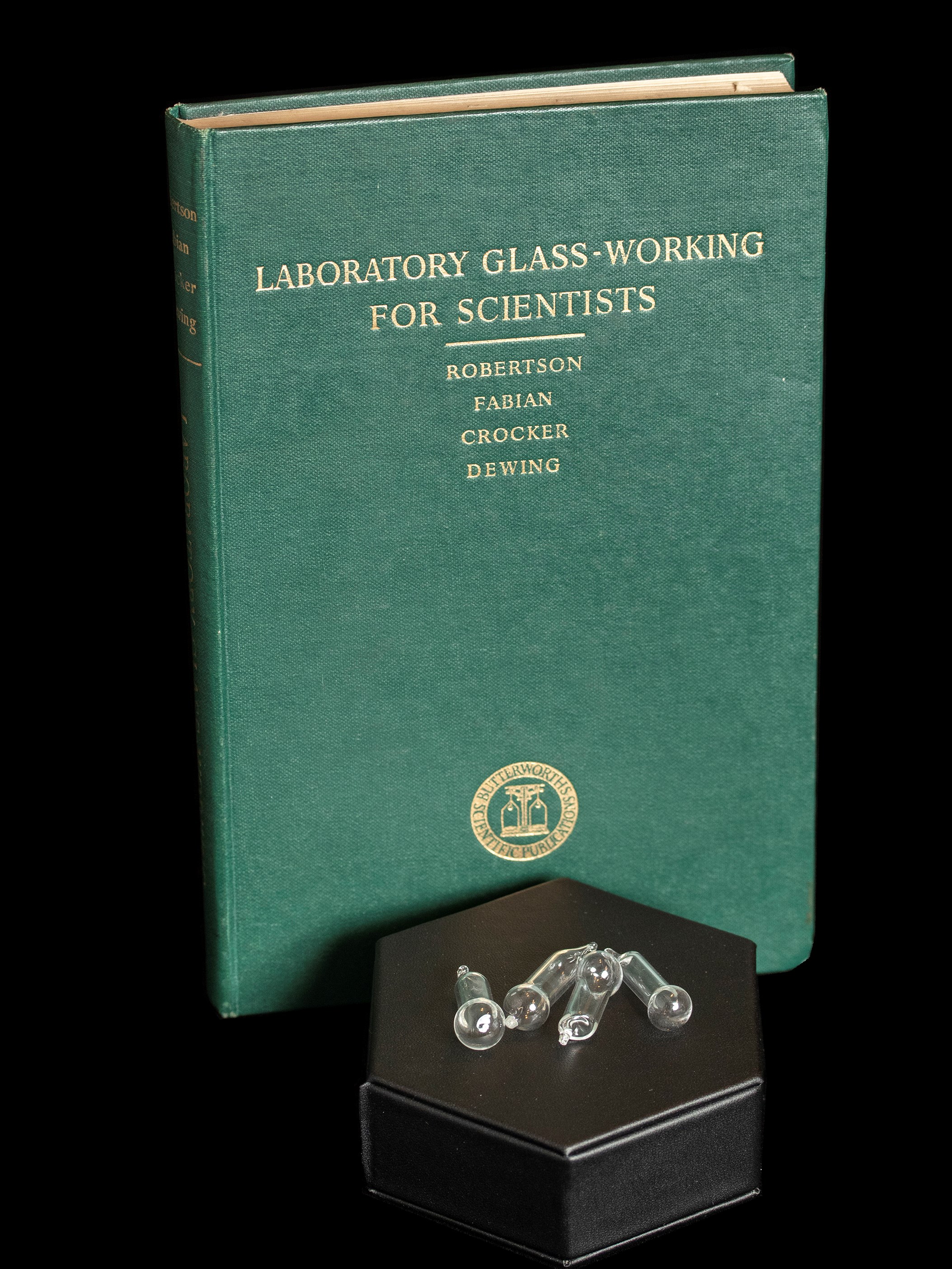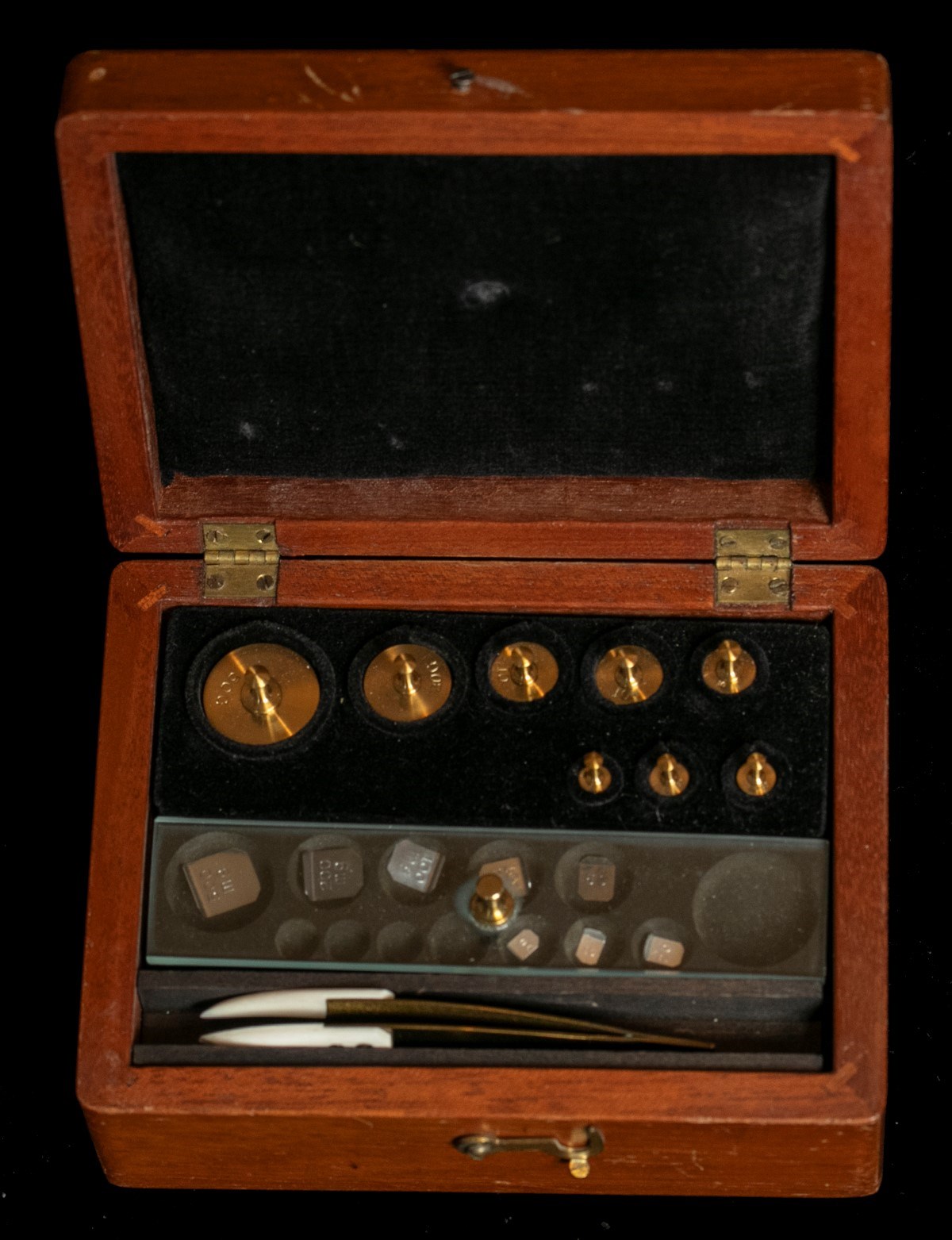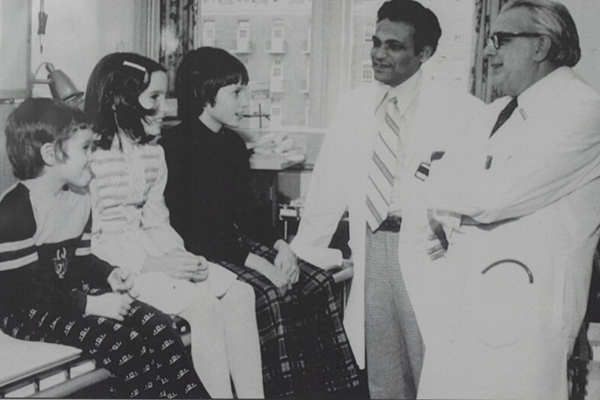
Scientific Instruments
Abbe refractometer
Donated by Dr. Robert Harrison, Senior Scientist, Neurosciences & Mental Health
The Abbe refractometer, invented by German physicist and optician Dr. Ernst Abbe in the 1880s, is a scientific instrument that measures the refractive index of a substance, which is a measure of how much the substance bends light. It consists of a high-refractive-index prism and a microscope for observing light passing through the prism and allows for precise measurements of the refractive index of a wide range of substances. The Abbe refractometer was widely used in scientific research and industrial applications during the late 19th and early 20th centuries, paving the way for further advancements in optics.
Apothecary scale
Donated by Dr. Robert Harrison, Senior Scientist, Neurosciences & Mental Health
Apothecary scales were used by pharmacists and physicians to accurately measure and dispense drugs and other medications, dating back to ancient Egypt and Greece. In the 20th century, apothecary scales were replaced by more modern and accurate digital scales. Today, antique apothecary scales can be found in museums and private collections as they are no longer used.
Blood cell counter
Donated by Dr. Cynthia Hawkins, Neuropathologist in the Department of Paediatric Laboratory Medicine and Senior Scientist in the Cell & Systems Biology program, The Arthur and Sonia Labatt Brain Tumour Research Centre.
An 8-key Lab Manual Differential Blood Cell Counter is a handheld device used by laboratory professionals to manually count and classify different types of white blood cells (WBCs) present in a blood sample. The device typically has eight keys corresponding to specific types of WBCs, such as neutrophils, lymphocytes, monocytes, eosinophils, basophils, band cells, metamyelocytes, and myelocytes. By pressing the appropriate key for each cell type observed under a microscope, the user can keep a tally of the different WBCs and determine their relative proportions. This manual counting method is essential for performing a differential blood cell count, which helps diagnose various diseases and monitor a patient's health.
Brass compound microscope
Donated by Dr. Robert Harrison, Senior Scientist, Neurosciences & Mental Health
The brass compound microscope is an instrument that revolutionized the field of science and allowed scientists to observe and study microscopic specimens in detail. The use of multiple lenses in the microscope provided greater magnification and resolution, which enabled scientists to make new discoveries and advancements in various fields such as biology, medicine and astronomy. The brass compound microscope has a rich history, dating back to the late 16th century when it was first developed, and it played a vital role in the advancement of scientific knowledge during the 17th and 18th centuries. While newer technologies have emerged, the brass compound microscope remains an important symbol of scientific discovery and is used in certain scientific and educational settings.
Bunsen burner
Donated by Dr. Robert Harrison, Senior Scientist, Neurosciences & Mental Health
The brass compound microscope is an instrument that revolutionized the field of science and allowed scientists to observe and study microscopic specimens in detail. The use of multiple lenses in the microscope provided greater magnification and resolution, which enabled scientists to make new discoveries and advancements in various fields such as biology, medicine and astronomy. The brass compound microscope has a rich history, dating back to the late 16th century when it was first developed, and it played a vital role in the advancement of scientific knowledge during the 17th and 18th centuries. While newer technologies have emerged, the brass compound microscope remains an important symbol of scientific discovery and is used in certain scientific and educational settings.
Mouth-blown glass test tube stoppers
These four mouth-blown glass test tube stoppers from the laboratory of Dr. Harry Schachter are a testament to the close collaboration between scientists and skilled glassblowers in the early days of scientific research. While the mass-production of glassware like beakers and flasks became possible in the 1920s, scientists often required customized glassware to meet their specific experimental needs. Working with glassblowers, they were able to create intricate and specialized laboratory equipment. Some scientists even became skilled at glassblowing themselves.
Displayed behind the test tube stoppers is a copy of "Laboratory Glass-working for Scientists" — a comprehensive guidebook for scientists and technicians on the art and science of glassblowing first published in 1954.
Scale weights
Donated by Dr. Robert Harrison, Senior Scientist, Neurosciences & Mental Health
Scale weights have been used for thousands of years and are an essential tool for trade, commerce and science. The earliest forms of scale weights were made from natural materials such as stone, wood, and bone. Metal weights were first used in ancient Egypt and Greece and became increasingly prevalent as the demand for more precise and standardized weights grew. These weights were typically made from brass, iron or lead, and were often stamped with the weight value and a symbol or seal to ensure their authenticity. Today, digital scales have replaced traditional weight sets, but antique scale weights remain a popular collectible item.


